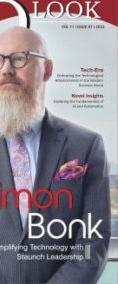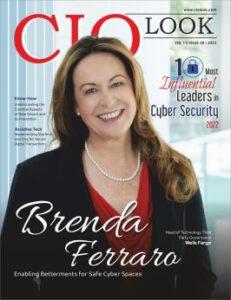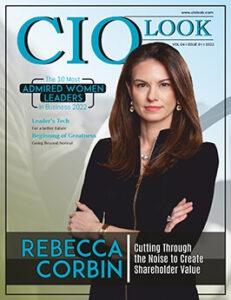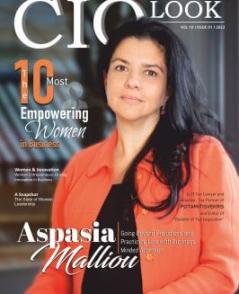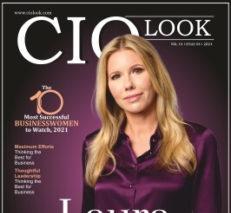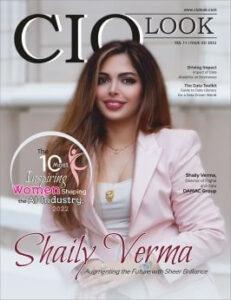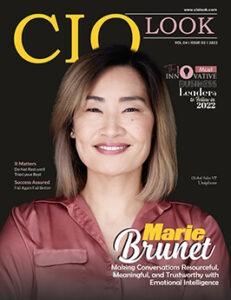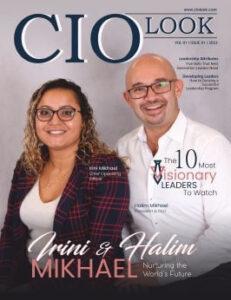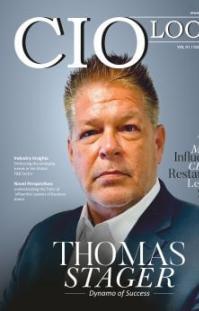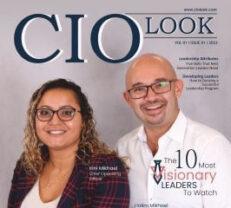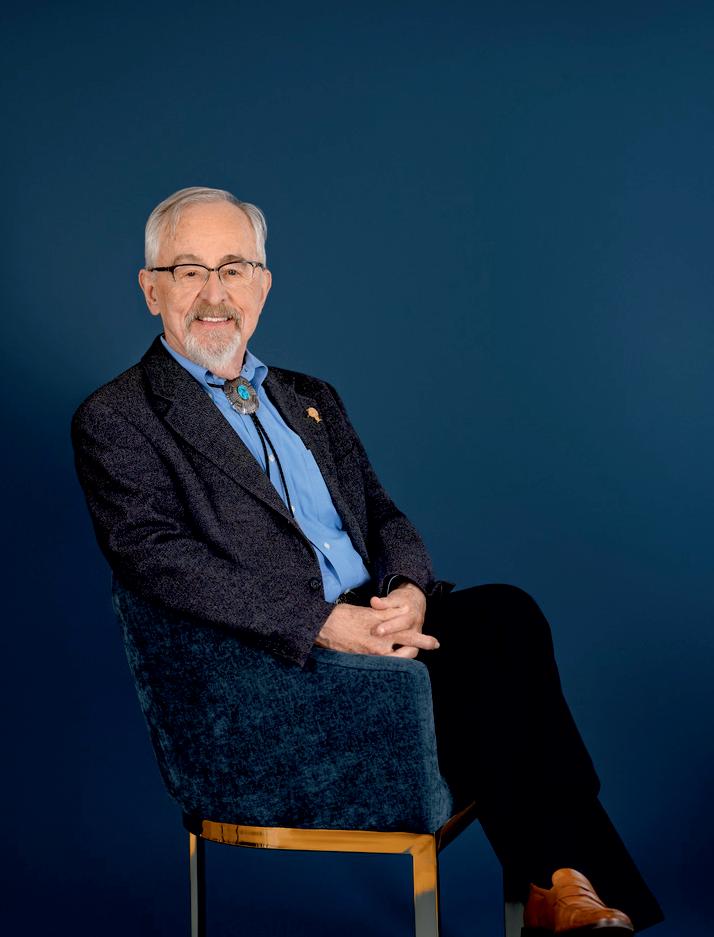


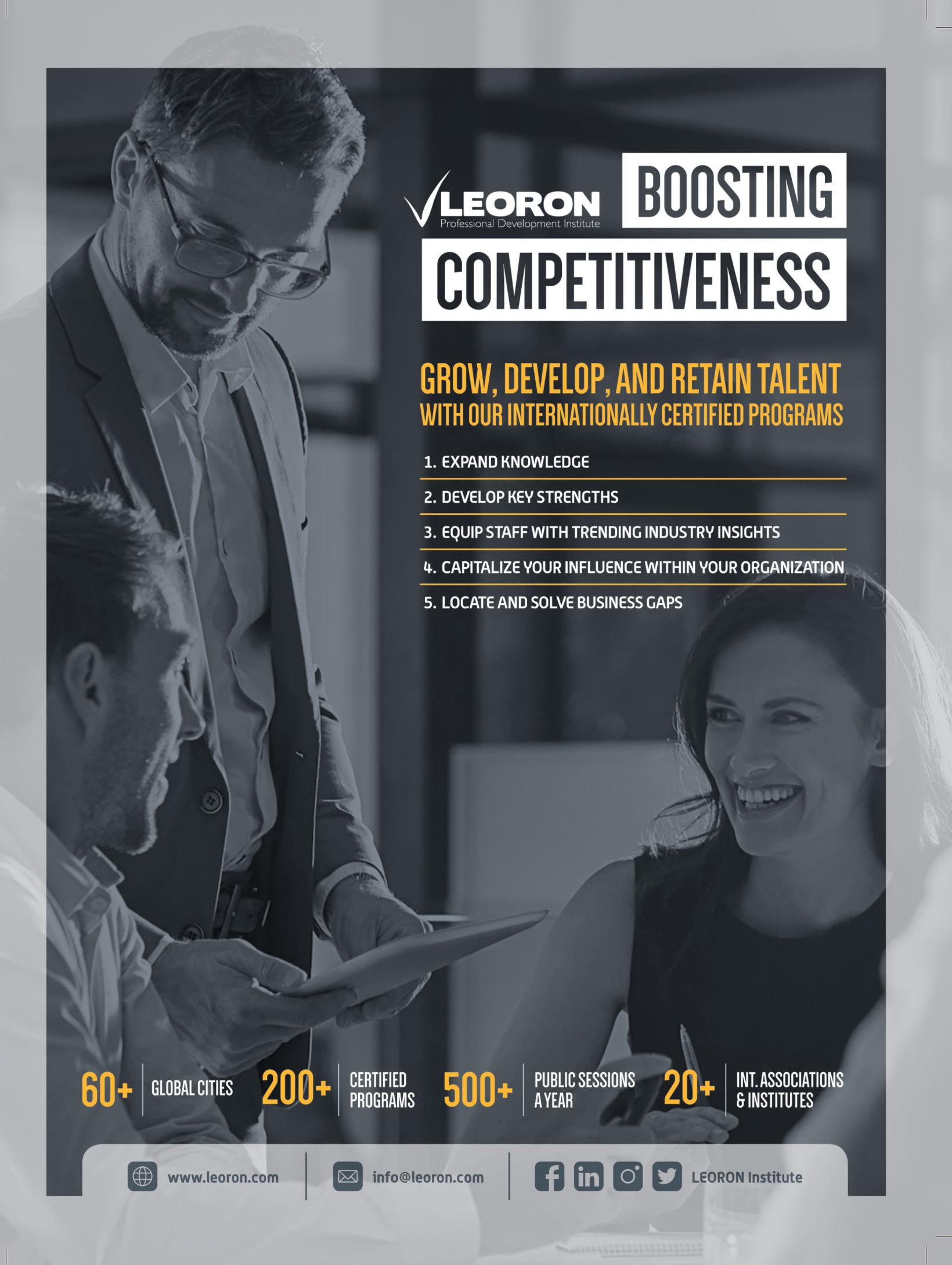










Innovation in education is no longer optional—it is
essential.Astheworldundergoesarapidtechnological, social, and economic transformation, our approach to learning must evolve just as swiftly This edition of The Power List 2025 honors the visionaries who are not only keeping pace with change but leading it driving breakthroughsthatwilldefinehowfuturegenerationslearn, think,andgrow.
AttheforefrontofthistransformativemovementisRichard C. Larson—a name that stands not just for academic excellence, but for pioneering thought leadership that bridges disciplines, generations, and futures. Known globallyforhiscontributionstooperationsresearch,STEM education, and technology-enabled learning, Larson has become a central figure in the conversation about where educationisheadingandwhoisguidingitthere.
His work, deeply rooted in both theory and practice, has inspiredcountlesseducators,researchers,andpolicymakers to rethink what education should look like in a digital-first, innovation-driven world.Whether through groundbreaking researchatMIT,hisdedicationtoequitableaccesstoSTEM education,orhisvisionforlifelonglearningsystems,Larson exemplifies what it means to lead with both intellect and impact.
This edition is more than a list—it’s a tribute.A tribute to those who aren’t waiting for the future to arrive; they are activelyshapingit.RichardC.Larson’sinclusionisnotonly deserved—it is defining. His legacy is one of connection: between academia and application, between learners and opportunity, between today’s challenges and tomorrow’s possibilities.
AswecelebrateAmerica’sleadinginnovatorsineducation, wedosowithadeepsenseofpurpose.Theseindividualsare not just changing classrooms they’re transforming cultures of learning They are ensuring that education remains the most powerful tool we have to shape a just, inclusive,andforward-thinkingsociety.
Letthiseditionstandasareminder:thefutureofeducationis bright—because it is being built by brilliant minds like RichardC.Larson.


Editor-in-Chief
CONTENT
Deputy Editor Anish Miller
Managing Editor Prince Bolton

Visualizer Dave Bates
Art & Design Director Davis Mar�n
Associate Designer Jameson Carl
SALES
Senior Sales Manager Wilson T., Hunter D.
Customer Success Manager Collins J.
Sales Execu�ves Tim, Smith
TECHNICAL
Technical Head Peter Hayden
Technical Consultant Victor Collins July,
SME-SMO
Research Analyst Eric Smith
SEO Execu�ve Alen Spencer

FOLLOWUSON www facebook.com/ciolook www.twi�er.com/ciolook
WE ARE ALSO AVAILABLE ON
Email info@ciolook com
For Subscrip�on www.ciolookmedia.com CONTACTUSON
Copyright © 2025 CIOLOOK, All rights reserved. The content and images used in this magazine should not be reproduced or transmi�ed in any form or by any means, electronic, mechanical, photocopying, recording or otherwise, without prior permission from CIOLOOK. Reprint rights remain solely with CIOLOOK.
FeaturedPerson
JoumanaAbdo HeadofMath Department
RichardCLarson Professor
AlMawakeb AlGarhoud garhoud.almawakeb.sch.ae
MIT www.mit.edu
SakhaaAlsaedi PHDCandidate
KAUST kaust.edu.sa/en/
SteffenSommer DirectorGeneral
SulaimanAkbar SchoolPrincipal
Brief
JoumanaAbdoisadedicatededucatorandacademicleader withextensiveexpertiseinmathematicseducationand curriculumdevelopment.
Beyondresearch,Prof.Larsonisapassionateadvocatefor globaleducationreform.HeisthefoundingdirectorofMIT LINC(LearningInternationalNetworksConsortium),which fostersinnovationindigitallearningacrossemergingand underservedregions.
Sakhaa'sworkfocusesonexploringinnovativesolutions, contributingtoacademicdiscourse,andpushingthe boundariesofknowledgethroughrigorousresearchand analysis.
SteffenSommerisanaccomplishedDirectorGeneralwith extensiveleadershipexperienceinstrategicmanagement, organizationaldevelopment,andoperationalexcellence. MiskSchools miskschools.edu.sa
BrightLearners PrivateSchool brightlearners.ae
SulaimanAkbarisadedicatedSchoolPrincipalwithastrong commitmenttoacademicexcellence,studentdevelopment,and institutionalleadership.
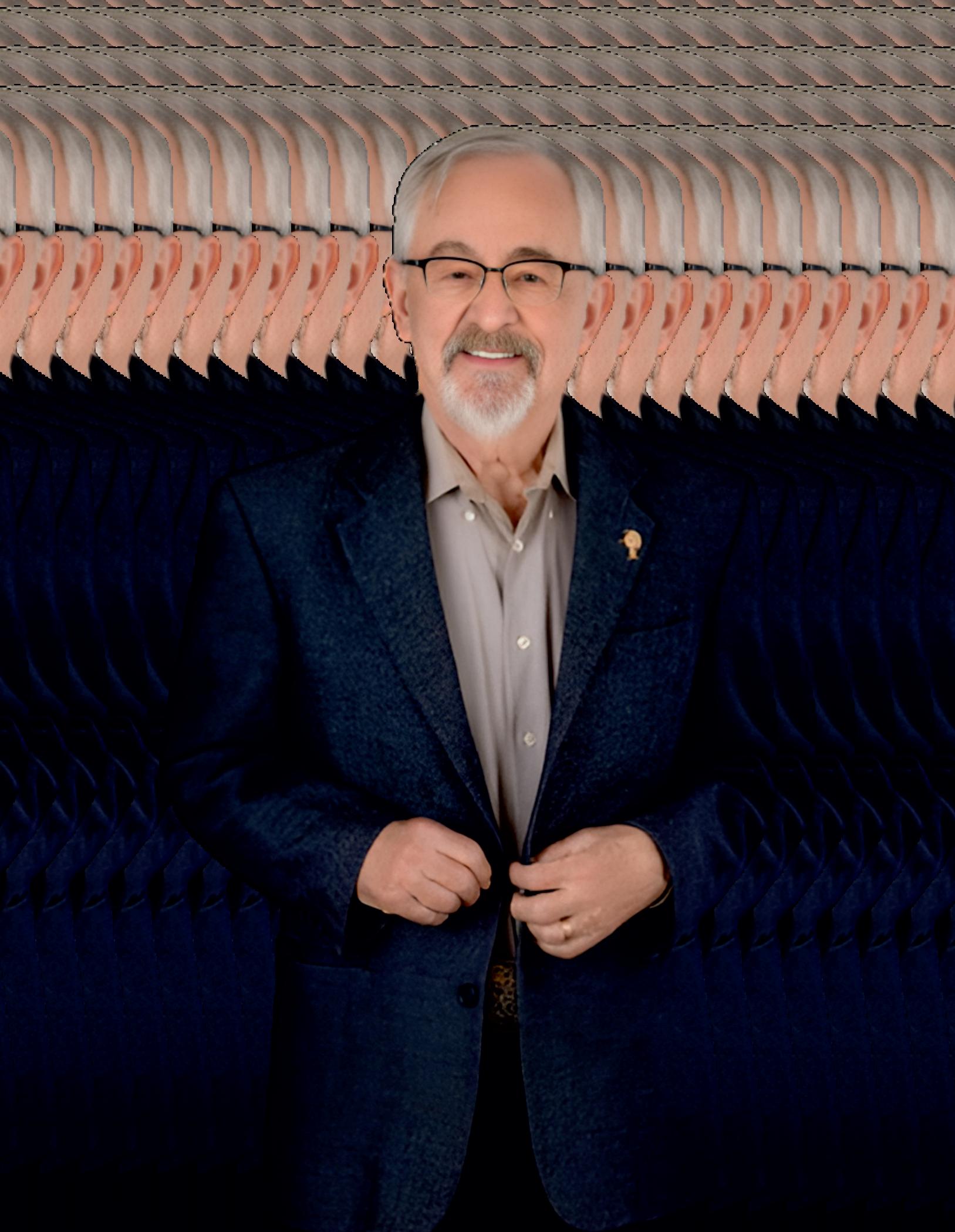




Dr.RichardLarson’snamehasbecomesynonymous
with innovation, not just in academic corridors but across systems that shape everyday life from emergencydispatchestoclassroomsinunderservedregions. As a Professor Post Tenure at MIT's Institute for Data, Systems,andSociety,Dr Larson’slegacyisatapestrywoven with research, real-world impact, and a commitment to nurturing critical thought. For over five decades, he has pioneered the application of operations research to solve problems many didn’t even realise could be mathematically modelled.
At the heart of Dr Larson’s work lies a powerful question: Can we design smarter systems that improve how the world functions? Whether it’s reducing wait times in emergency roomsorcraftingeducationaltoolsthattranscendgeography, his research starts with human need and ends in transformative solutions. His innovations, like the Queue InferenceEngine(QIE)andtheHypercubeQueueingModel, have reshaped how industries approach logistics, efficiency, andpublicservice.
Butbeyondalgorithmsandanalytics,Dr Larsonchampionsa humanistic view of technology believing that critical thinking, hands-on learning, and mentorship are the pillars uponwhichsustainableinnovationisbuilt.Hisleadershipin education through initiatives like MIT BLOSSOMS and LINC(LearningInternationalNetworksConsortium)reflects his belief in accessible, engaging, and technology-enhanced learning.Thisisthestoryofamanwhoseacademicjourney began with uncertainty but evolved into a legacy of global transformation.
StandinginlineisamundanefrustrationthatDr.Larsonhas turnedintoafieldofprofoundstudy Throughhispioneering work in queueing theory, he developed the Queue Inference Engine(QIE)—amathematicaltoolthatallowsorganizations to understand and optimize queues even without direct observation. In sectors like healthcare, banking, retail, and public services, this model has proven instrumental in enhancingbothefficiencyandcustomersatisfaction.
One of his most groundbreaking contributions, the Hypercube Queueing Model, is now a cornerstone in emergency service systems around the world. Adopted by policeandambulancedispatchunits,thismodelhelpsallocate resourcesdynamically,improvingresponsetimesandsaving
lives.WhatsetsDr.Larsonapartisnotjusthisabilitytomodel systems, but to translate complex mathematics into accessible,impactfultools.
Dr Larson’sworkinurbanoperationsresearch,co-authoring one of the field’s foundational texts, brought rigorous quantitativethinkingintocityplanningandpublicpolicy He transformed the abstract into the applicable—bringing logic to chaos, structure to unpredictability, and measurable improvementstolives.
Dr Larson’s journey into academia was far from predetermined. Initially drawn to physics and mathematics, he arrived at MIT as a freshman without the intention of becoming a professor. A pivotal moment came when his advisorsuggestedgraduateschool,leadinghimtoaresearch projectwiththeBostonPoliceDepartment.
Hedidn’tjustcrunchnumbers—heimmersedhimselfinthe field, spending over 200 hours in patrol cars to understand real-world operations. His insights led him to serve as the youngest member of the President’s Crime Commission’s ScienceandTechnologyTaskForce.Fromthere,theblendof theoryandpracticebecamehishallmark.
Dr Larson discovered that academia could be a bridge betweenintellectualpassionandpublicservice.Overtime,he became a respected thought leader in operations research, knownnotonlyforinnovationbutforintegratinghismodels withgenuinesocietalneed.
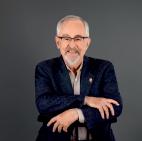
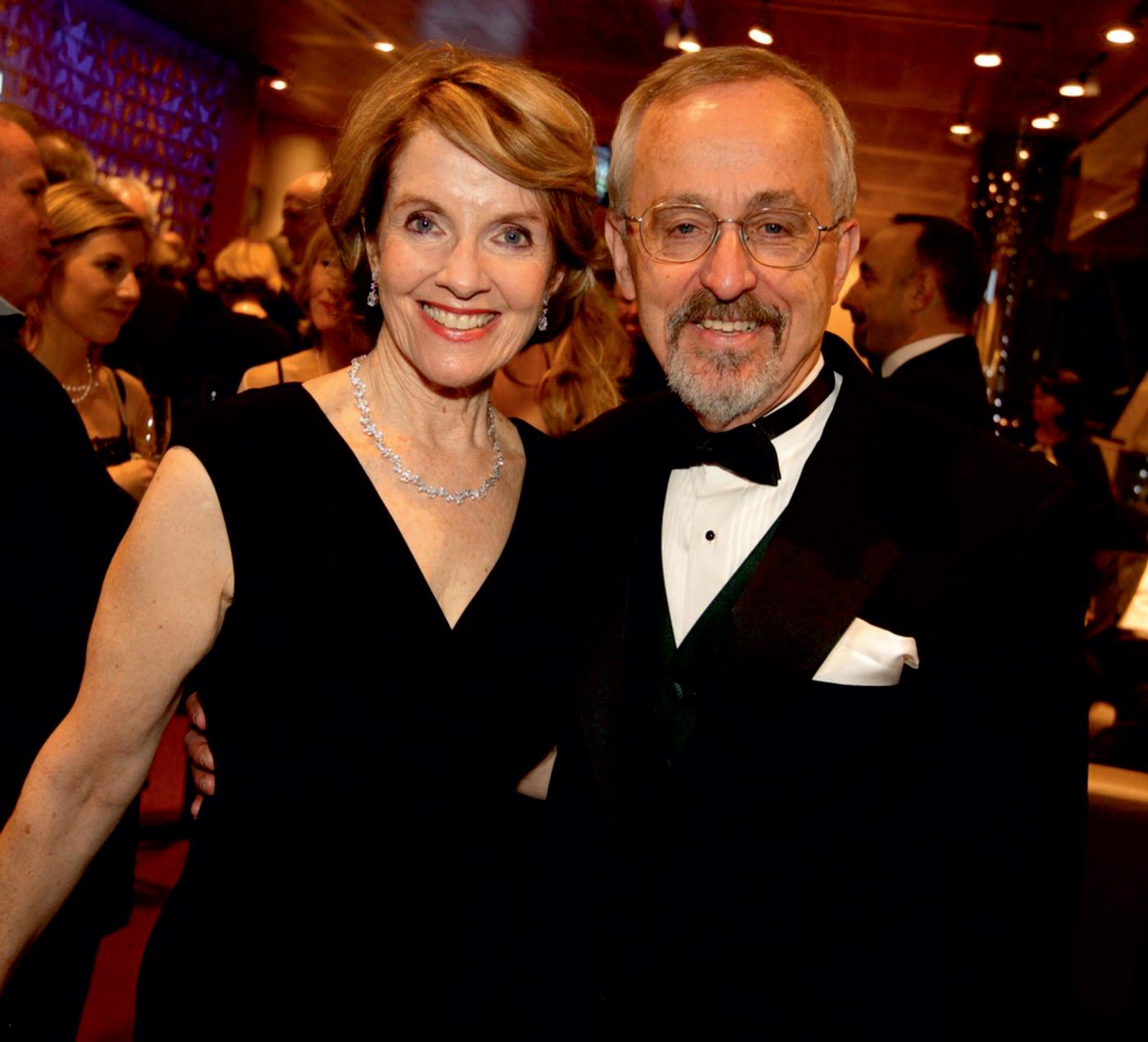
Dr.Larson’sbeliefinthepowerofeducationisnotconfinedto the classroom; it’s about access, engagement, and lifelong learning As Director of MIT’s Center for Advanced Educational Services (CAES), he led efforts to integrate digital tools into pedagogy long before remote learning becamemainstream.
Through the MITBLOSSOMS initiative, Dr. Larson sought tobringhigh-qualitySTEMeducationtostudentsaroundthe
world especially in underserved regions BLOSSOMS integrates interactive video lectures with in-classroom activities,blendingonlineandofflinelearning.Itreflectshis deepbelief:“Educationistheladdertoabetterlife.Onceyou acquireknowledge,noonecantakeitaway.”
In founding MIT LINC, he created a global platform for educators, researchers, and policymakers to collaborate on improving education through technology His work fosters equity by ensuring that digital innovation doesn’t widen educationalgapsbutinsteadclosesthem.
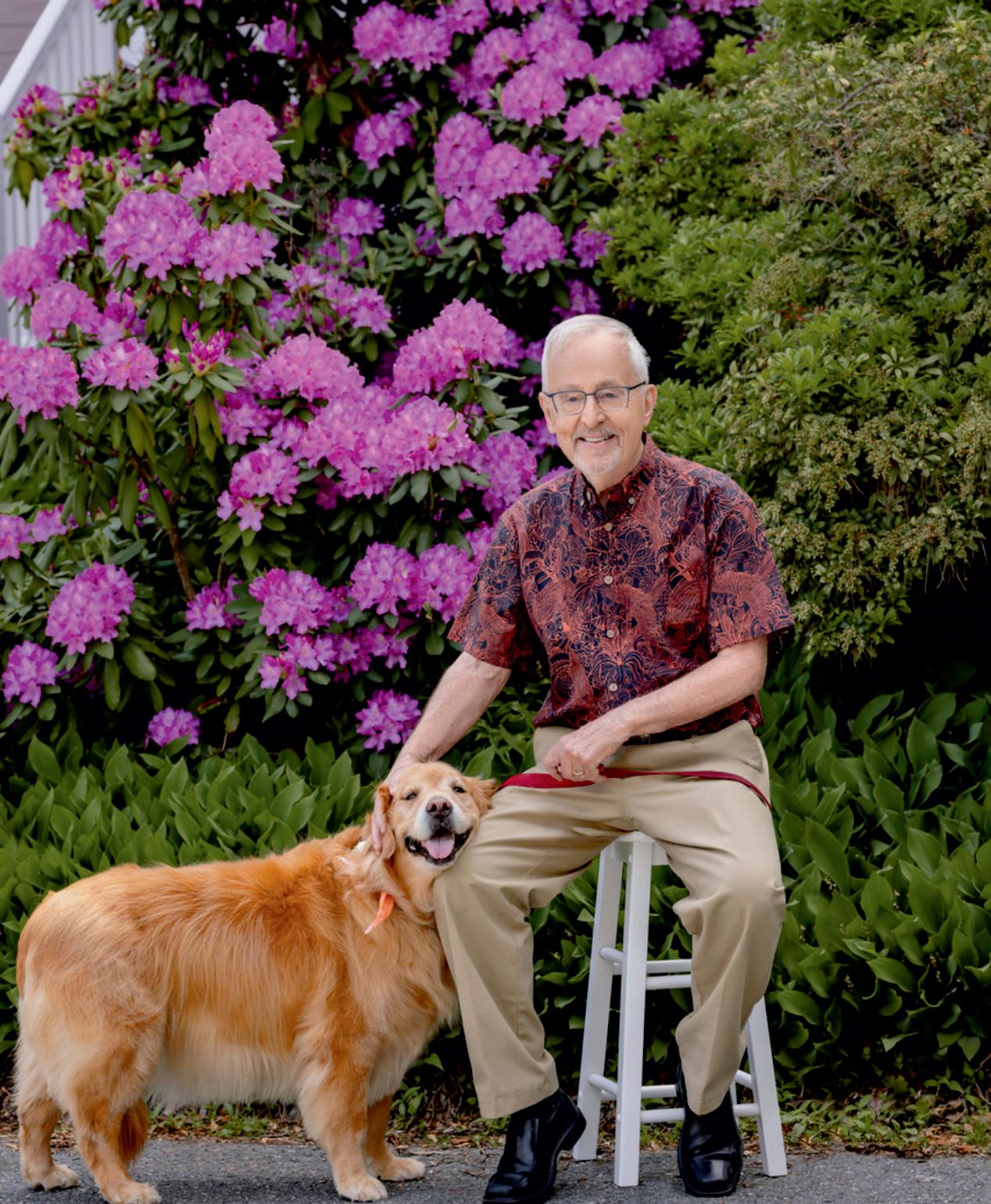

AI’sRiseandtheRoleofHumanJudgment
Dr. Larson approaches artificial intelligence with both excitement and caution. While acknowledging its potential, he urges society not to let machines overshadow human judgment. In his book MODEL THINKING For Everyday Life, he champions mathematical modeling not as a replacementforthinking,butasatooltosharpenit.
HewarnsagainsttheblindacceptanceofAI-drivendecisions: “PeopleassumeAIcananswereverything,butwithoutdeep humanunderstanding,weriskmakingflaweddecisions.”He advocatesforabalance—leveragingtechnologytoaugment, notreplace,humaninsight.
His approach is refreshingly analog in a digital age. He encouragesstudentsandprofessionalstoreturntobasics:use apencil,thinkaloud,sketchmodelsbyhand.Bydoingso,
he believes we develop a more intimate understanding of systems—andavoidthepitfallsofover-automation.
Dr Larson’s leadership philosophy is as methodical as his research. He believes in leading by example, cultivating curiosity, and fostering collaboration. He has mentored
countless students, many of whom have gone on to become industryleaders,professors,andpublicservants.
Hisprinciplesinclude:
• BeYourself:Authenticitydrivesrespectandinnovation.
• Observe the Real World: The best models arise from firsthandunderstanding.
• EncourageInnovation:Challengesareopportunitiesin disguise.
• ValueCollaboration:Ideasgrowricherwhenshared.
His students describe him as accessible, generous with his time,anddeeplyinvestedintheirgrowth.Hismentorshiphas created a ripple effect, expanding his influence far beyond MIT’swalls.
Every breakthrough Dr Larson achieved came through challenges.Oneofhiscorebeliefsisthatmodelsmustbalance accuracy with usefulness. It’s not enough to be correct on paper—themodelmustworkinthemessinessofreality.
He embraces failure as part of the learning process. “You won’t get it right the first time, but through iteration, you refine your approach,” he states. His resilience is not about avoidingmisstepsbutlearningfromthemquickly.
Thispragmaticmindsetallowshimtoinnovatecontinuously. Whether dealing with skeptical policymakers or integrating newtechnologies,Dr Larsonapproacheseachobstaclewitha combinationofrigorandopen-mindedness.


ThoughDr Larsonhastransitionedfromactiveresearch,his presenceatMITremainsinfluential.Hebelievestheinstitute thrivesnotasamonolith,butthroughtheindividualityofits 1,000+ faculty members. Each one follows their intellectual passion—andindoingso,theycreateanenvironmentwhere innovationflourishes.
Heenvisionsafuturewhereeducationprioritizesinteraction andapplicationoverrotelearning.Digitaltools,inhisview, should enhance not replace the student-teacher connection. The goal is a holistic educational model where learnersquestion,apply,andcreate.
Dr Larson continues to advise emerging researchers, advocate for model-based thinking, and support interdisciplinary initiatives. His legacy at MIT is one of intellectualrigor,mentorship,andglobalimpact.

When asked what advice he offers the next generation, Dr Larsondistillsdecadesofwisdomintoafewguidinglights:
• Follow Your Passion: The best work emerges from genuinecuriosity.
• Stay Curious: Never stop asking questions or seeking answers.
• Challenge the Status Quo: Don’t fear being different—innovationdemandsit.
• Think About Impact: Your work should improve the world,notjustyourrésumé.
• MentorOthers:Knowledgemultiplieswhenit’sshared.

These principles form the compass by which Dr. Larson has navigatedhisremarkablecareer.Foryoungmindsenteringa world of uncertainty and opportunity, his insights provide bothguidanceandinspiration.
Dr. Richard Larson’s influence spans far beyond the boundaries of academia. His models have saved lives in emergency systems, his educational innovations have reached remote villages, and his mentorship has shaped leaders across disciplines. He has proven that the power of operationsresearchliesnotonlyinitstechnicalprecisionbut initshumanapplication.
His story is a testament to what happens when intellectual rigor meets empathy, when technology meets purpose, and
when leadership meets humility. Dr. Larson has shown the world that with the right mindset, even the most complex problems can be solved—and that education, curiosity, and models built on human values will always stand the test of time.
As we look to the future, his work reminds us: The best systems are those that serve people—and the best minds are thosethatneverstoplearninghowtoservebetter.
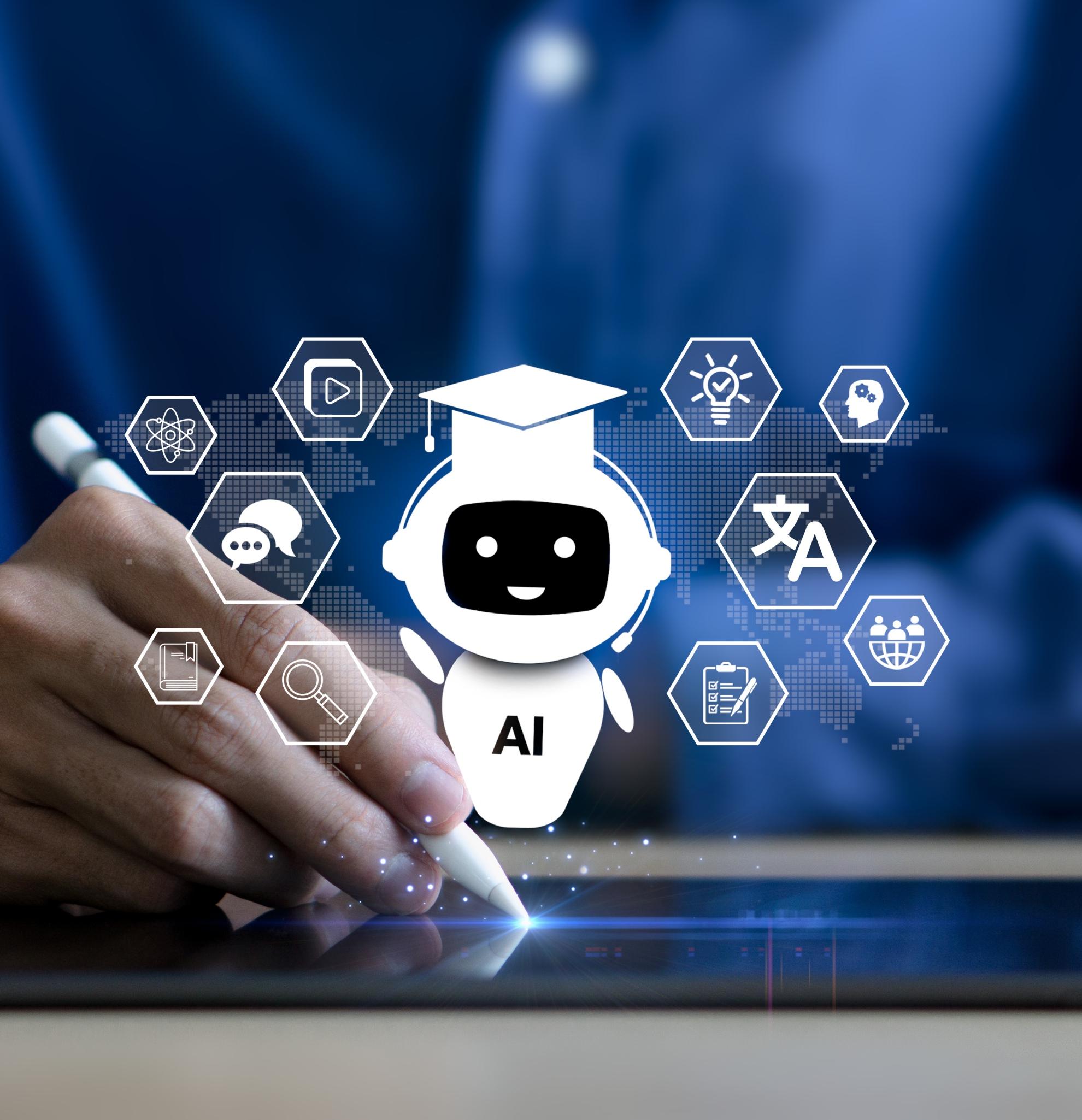

As the global education landscape continues to evolve under the pressure of technological advancement, socio-economic shifts, and increased calls for equity, a fundamental question arises: Whoshouldbesteeringthedirectionofeducation—centralauthoritiesor localcommunities?
Educational governance—the system by which decisions are made, policies are set, and resources are allocated—has traditionally oscillated between centralized models (often run by national or regional governments) and decentralized, community-driven approaches. Today, both models face renewed scrutiny as stakeholders seek educational systems that are not only equitable and efficient but also agile and responsivetolocalrealities.
Centralized educational systems offer several compelling benefits Uniformity in curriculum and assessment ensures that all students, regardlessoftheirgeographiclocation,haveaccesstothesamequalityof education. It facilitates national benchmarking, simplifies teacher training, and enables economies of scale in policymaking and resource distribution.
In contexts where disparities across regions are stark—due to income inequality, political instability, or under-resourced local institutions—centralized governance can act as a leveling force. It helps implementreformsatscaleandensuresthatnochildisleftbehinddueto localinefficienciesorbias.
Moreover,inanincreasinglyglobalizedworld,standardizationprovidesa shared academic framework, preparing students to compete on internationalplatformswithcomparablequalificationsandcompetencies.
Yet, despite its efficiencies, centralization can also be impersonal, bureaucratic, and disconnected from on-the-ground realities. This is where community-driven governance finds its strength. By devolving decision-making power to local leaders, educators, parents, and even students,educationsystemsbecomemoreresponsive,culturallyrelevant,
andadaptable.
Community-drivenmodelsallowforcurriculatoreflectlocal languages, histories, economies, and values. They empower schools to experiment, innovate, and tailor solutions to the uniquechallengestheirlearnersface.Whencommunitiesare stakeholders—notjustrecipients—ofeducation,engagement rises, accountability strengthens, and outcomes often improve.
During the COVID-19 pandemic, for example, schools with local governance structures often proved more nimble in adaptingtoremotelearningandaddressingthespecificneeds oftheirstudentsandfamilies.
At the heart of the debate lies a tension between equity and autonomy Centralized systems often strive for fairness through uniformity, while decentralized systems achieve relevancethroughflexibility Butcanwehaveboth?
Critics argue that too much local control can exacerbate inequality, particularly if affluent communities have more resources or political influence than others. On the flip side, overly centralized systems risk becoming rigid and slow to innovate,applyingone-size-fits-allsolutionsincontextsthat demandnuance.
Striking the right balance requires a governance model that protects national standards and equity goals while also allowing for local innovation and ownership. It’s not about choosing one model over the other, but about reimagining governanceasasharedendeavor.
Emerging trends suggest that the future may lie in hybrid or collaborative governance models where roles and responsibilities are distributed across national, regional, and communitylevels.
In such systems, central governments provide the broad framework—curricular benchmarks, funding mechanisms, teachercertification—whilelocalentitieshavetheautonomy to implement strategies aligned with their specific needs. These systems emphasize partnership over control, and adaptabilityoverrigidity.
Successful examples can be found in countries like Finland, wherenationalcurriculaexist,butschoolsandmunicipalities
enjoy significant freedom in how they implement teaching and learning. Or in New Zealand, where schools operate under a system of self-governance, yet align with national educationalgoalsandaccountabilitystructures.
At its core, educational governance is about power—who holdsit,howit’sused,andinwhoseinterest.Afuture-facing model must prioritize inclusive governance that brings together ministries, educators, families, students, and communities. It must leverage data and evidence, but also honorlivedexperienceandlocalwisdom.
Technologywillalsoplayakeyrole.Withdigitalplatforms, feedback loops, and real-time data, governance can become more transparent, participatory, and responsive—no matter wheredecisionsarebeingmade.
Thequestionisn’tmerely centralized or community-driven? It’sabouthowwedesigneducationalecosystemsthatareboth coherent and context-sensitive. The future of educational governance must move beyond the binary and toward dynamicsystemsofsharedleadership,wherestandardization and customization are not seen as opposites but as complementaryforces.
If we get it right, we won't just create better education systems—we'llempowerfuturegenerationswiththeagency, adaptability,andequityneededtoleadinanuncertainworld.






Inaworldmarkedbyrapidtechnologicalchange,shifting
jobmarkets,andwideningsocialdivides,thestakesfor educationsystemshaveneverbeenhigher Whileevery countryfacesitsownuniquechallenges,there’smuchtolearn from those that have consistently achieved high performance—measurednotjustintestscores,butinequity, innovation, and long-term learner outcomes. By studying global models—from Finland to Singapore, from Canada to South Korea—we uncover not a single blueprint, but a constellation of powerful ideas that can be adapted and reimaginedacrossdiversecontexts.
These education systems have found success not through quick fixes, but through long-term vision, a deep respect for educators,andanunwaveringbeliefinthepotentialofevery learner.
Oneofthemostconsistentcharacteristicsofhigh-performing systems is the elevation of teaching as a respected, highly skilledprofession.InFinland,forexample,allteachersmust hold a master’s degree, and entry into teacher education programs is highly competitive. But what makes this model powerfulisn’tjustthequalifications—it’sthetrustplacedin teacherstoinnovate,assess,andleadintheclassroomwithout beingmicromanagedbybureaucraticsystems.
Singapore, too, emphasizes ongoing teacher development through structured mentorships, career pathways, and incentivesforprofessionalgrowth.Inthesesystems,teachers arenotmereimplementersofcurriculum—theyaredesigners oflearningexperiences,deeplyinvestedinstudentoutcomes.
Thisapproachcontrastssharplywithsystemswhereteachers are overburdened, under-resourced, and assessed primarily through standardized metrics. The lesson is clear: invest in teachers not just with training, but with trust, time, and autonomy.
Equity and excellence are often positioned as trade-offs, but top-performingsystemsshowtheyaredeeplyinterdependent. InCanada,forinstance,particularlyinOntario,schoolsstrive for both high academic outcomes and strong supports for diverse learners, including immigrants, indigenous students, andthosewithspecialneeds.
Japan ensures that funding is equitable across schools r
assessments education is free from preschool through university, with a strong emphasis on inclusive learning environmentsanddigitalaccess.
Thesecountriesrejecttheideathatsomestudentsaredestined to lag behind. Instead, they design systems that believe in every learner’s potential and provide the scaffolding needed forsuccess.Whetherthroughfreeearlychildhoodeducation, targeted interventions, or wraparound support services, equityistreatedasfoundational—notoptional.
Another shared characteristic is a curriculum that is both rigorous and relevant. High-performing systems focus on deep understanding rather than rote memorization. In South Korea, while there is a strong emphasis on academic achievement, reforms have increasingly prioritized creative thinking, character education, and interdisciplinary learning to reduce student stress and better prepare them for the real world.
In Finland, the curriculum emphasizes phenomenon-based learning, where students tackle real-world problems by integrating knowledge from multiple disciplines. This not only builds critical thinking but helps learners see the relevanceofwhattheyarestudying.
Whattheseexamplesdemonstrateisthatrigordoesn’tmean rigidity. Instead, it means setting high expectations while encouraging exploration, curiosity, and the development of transferableskills.
Assessment is a critical component of learning, but in highperforming systems, data is used to inform not dictate decisions Instead of high-stakes standardized testing,Finlandreliesonsample-basednationalassessments
and teacher-led evaluations to guide improvements. This minimizesstressandkeepsthefocusonauthenticlearning.
Similarly, in Singapore, while national exams exist, schools also invest heavily in formative assessment—continuous feedbackthathelpsstudentsunderstandhowthey’relearning andwheretheycangrow
The key takeaway: data should serve learning, not the other way around. When used thoughtfully, it can illuminate patterns, identify needs, and support student growth without narrowingthecurriculumorencouragingteachingtothetest.
Strong school leadership is another hallmark of highperforming systems. But rather than hierarchical, top-down models, these systems promote distributed leadership—where principals, teachers, and even students haveavoiceinshapingschoolcultureandpolicy
In Canada, principals are trained as instructional leaders, expectedtosupportteachingqualityandfostercollaborative learning environments. In Shanghai, school networks allow experienced educators to mentor leaders in struggling schools,sharingexpertiseandbuildingcollectivecapacity.
Thisapproachnurturesacultureofcontinuousimprovement, whereleadershipisasharedresponsibilityandinnovationis supportedatalllevels.
Ultimately, education is not just a system—it is a social contract The responsibility to nurture capable, compassionate, and curious citizens belongs to everyone: policymakers,educators,parents,andcommunitiesalike.
By drawing inspiration from the world’s best, and tailoring those insights to our own realities, we can create education systems that not only perform but also transform. Systems thatpreparelearnersnotjustforthetestsoftoday,butforthe challengesandopportunitiesoftomorrow



















